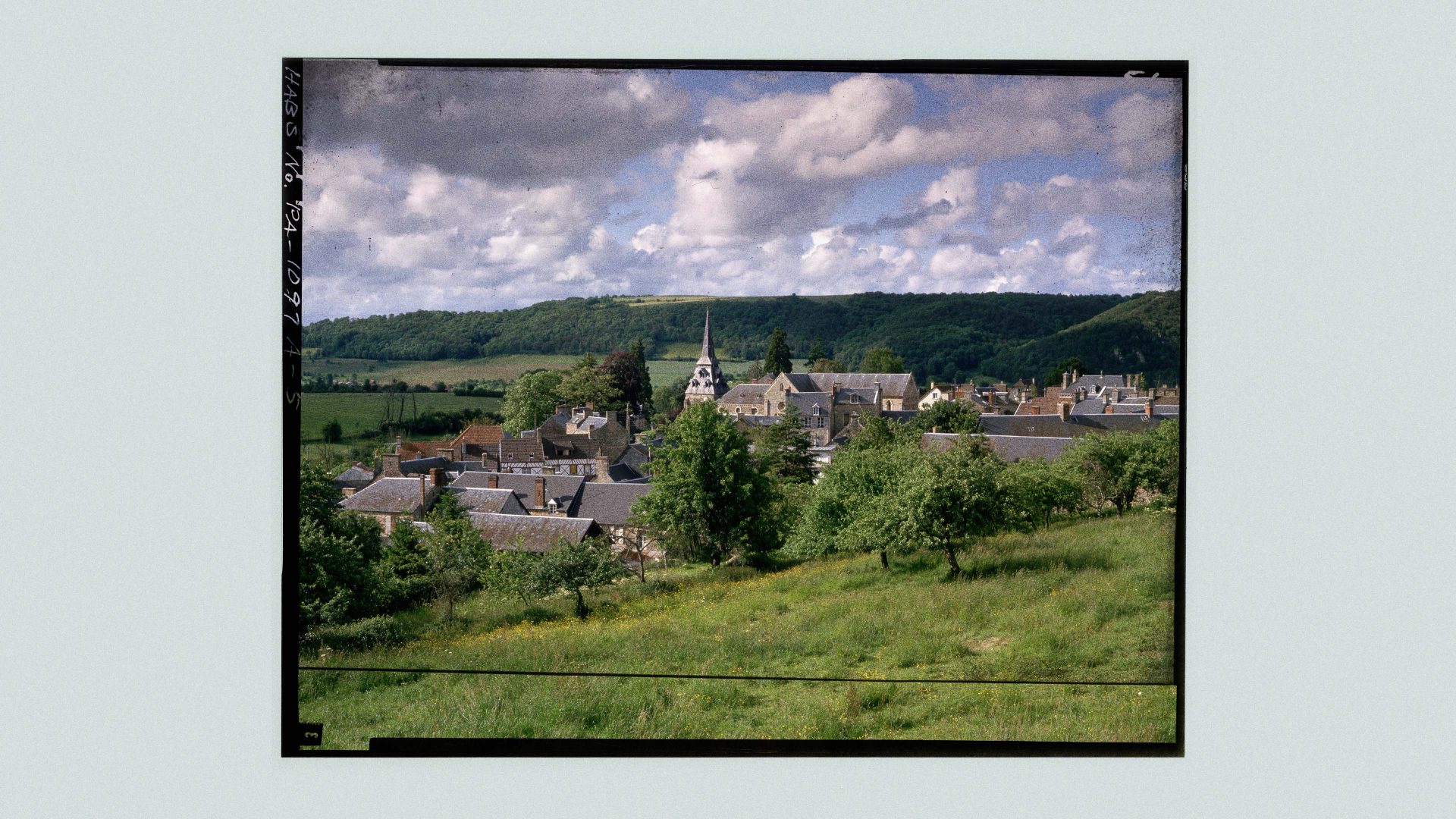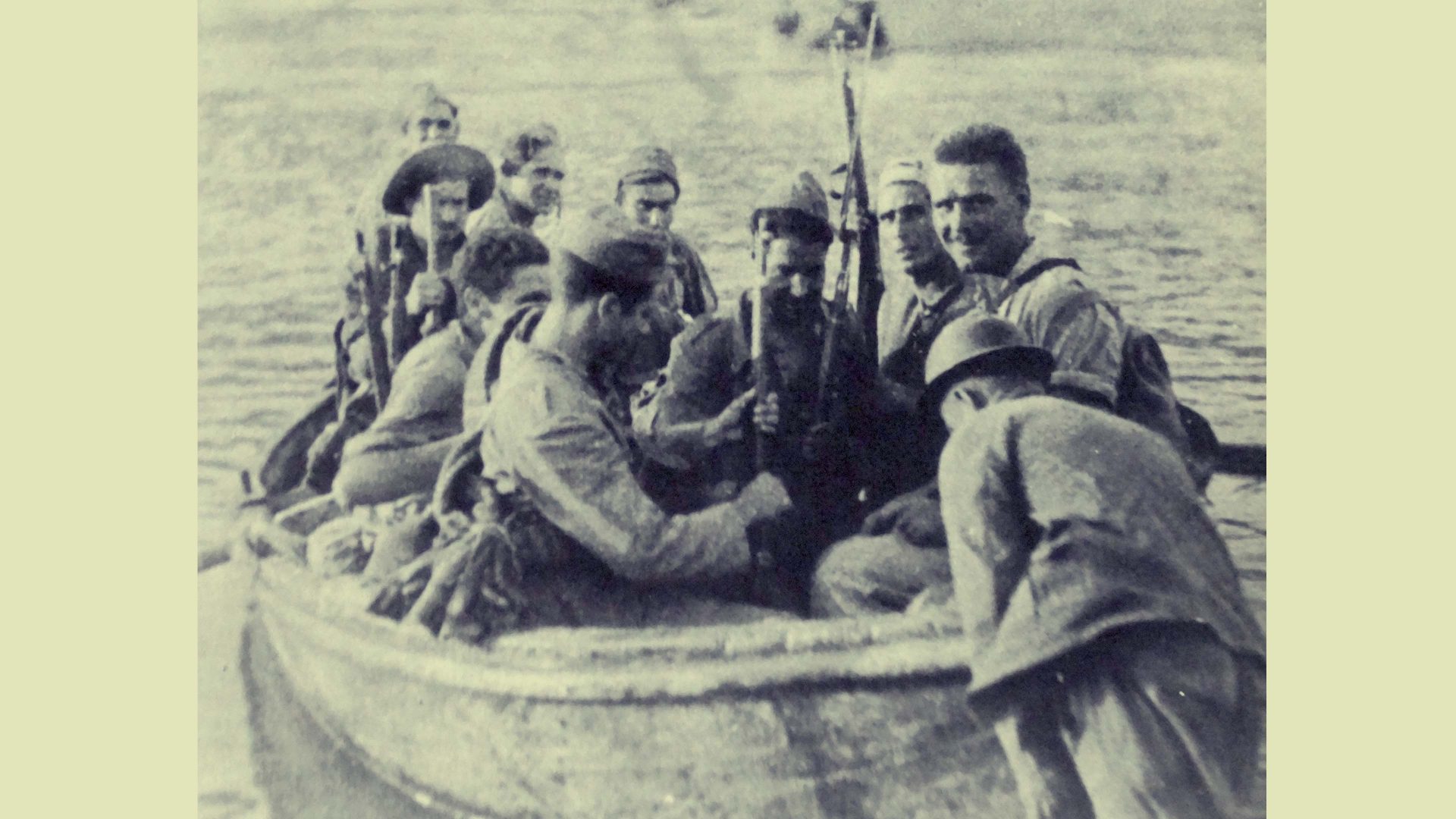Among the colourful characters who populated Clécy in Normandy in the early part of the last century, Monsieur Louvet was one of the most multi-skilled. He was the town’s apiculteur. He kept bees, and sold their honey in his small shop on the main street. And on the granite step outside the shop, he practised his other trade, which was pulling teeth.
Quite a few of his neighbours had two trades. Arthur Marguerite, who ran the town’s butcher shop from 1925 to 1955, was also lieutenant of the town’s firefighters. According to a plaque outside what was once his home, he was considered locally as “un homme autoritaire” – a bit of an authoritarian. Walk round the corner from Monsieur Marguerite’s house, and you discover that he was assisted in his firefighting duties by the proprietor of the leather shop, Lucien Fouques.
More than 60 houses in the centre of Clécy have plaques describing their former inhabitants. Most also show a picture of the view from the house as it was then. It’s a project initiated by Michel Bar, a local farmer who was elected the town’s mayor in 2004 as an independent, and who held the post until 2020. To walk in the streets is to learn the town’s past.
In Normandy, as in much of France, the past is still a living, breathing entity. That’s partly because the horrors of the recent past cut deeper into French life than in Britain. In Normandy, most towns have a plaque that tells you on which day in 1944 the town was liberated, and which nation, and even which regiment, got there first.
And it’s partly because France’s progress to democracy was rougher and more traumatic than our own. So while our rugby players are looking embarrassed as they mumble “Long live our noble king”, French players are belting out “Contre nous de la tyrannie, /L’étendard sanglant est levé” (the blood-soaked flag of tyranny is raised against us).
The local people – Clecyans – are proud of the plaques. Many of them are descended from those whose lives are summarised; others remember their parents talking about them.
And it keeps alive the stories of the second world war, such as the story of the butcher’s wife. In the years before 1930, Paul Hébert converted a café into a butcher’s shop. It had doors with iron grills, which provided ventilation for his meat and kept it fresh.
His wife, Suzanne, a famously generous woman, helped to ensure the town’s residents did not starve during the war. When the Germans decided to ban the movement of meat, she heard about it just before they came to search the house. She retired to her bed pretending to be ill, and hid a side of beef under her bed, which they did not find. She later shared it with the town.
Fernand Duval, who took over the blacksmith’s shop in 1928 and turned it into a garage, kept cars running on alcohol during the war. Afterwards, he installed wooden benches in the back of a small Renault to ferry people to the shops.
It also helps the town to remember its dead from the bombings of June 1944. The Café de l’Epoque was run by Celanie Groult, whose husband worked as a farmer and saddle-maker. On June 10 1944, Clécy was bombed and she and her daughter were killed. So, too, was Madame Chauvel, who had run a charcuterie since the 1920s. It was taken over by her nephew, Paul Vivier, who kept it until 2000.
Each morning, Monsieur Vivier swept the pavement outside his shop. Often two or three shopkeepers swept together, until they retired to the café Chez Titine for a restorative, Monsieur Vivier leaving his shop in the charge of his wife, Irène. The Crécy chroniclers understand that history is not just drama: it’s humdrum everyday life.



